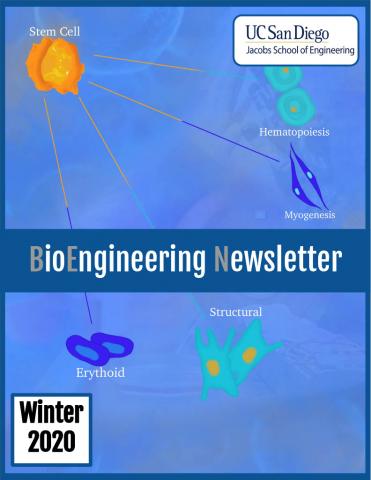Jiang Du
Associate Professor
Department of Radiology
University of California, San Diego
Seminar Information

Conventional magnetic resonance imaging (MRI) techniques have been employed to image and quantify tissues or tissue components with relatively long transverse relaxation times (T2s or T2*s). MR relaxation properties, including spin-lattice relaxation time (T1), relaxation time in the rotating frame (T1rho), T2* and T2, as well as tissue properties such as proton density have been measured for tissues evaluation. However, the human body also contains a number of tissues with predominantly short T2 components such as calcified cartilage, subchondral bone, menisci, ligaments, tendons, vascular calcification, myelin lipid and myelin basic protein (MBP) in white matter of the brain, cortical and trabecular bone, etc. These tissues or tissue components have T2s ranging from sub-milliseconds to several milliseconds and are largely “invisible” with conventional clinical MR sequences with typical echo times (TEs) of several milliseconds or longer. We have developed Ultrashort Echo Time (UTE) sequences with minimum nominal TEs of 8 µs that is about 100~1000 times shorter than conventional TEs of several milliseconds or longer, and this makes it possible to detect proton signal from short T2 tissues or tissue components. In this talk a series of contrast mechanisms will be introduced for high resolution morphological imaging of short T2 tissues or tissue components in vitro and in vivo. Quantitative imaging techniques to measure MR and tissue properties (such as T1, T2, T2*, T1rho, magnetization transfer ratio, perfusion, diffusion, total/bound/free water, etc) of these tissues or tissue components will be discussed. The applications in osteoporosis, osteoarthritis, psoriatic arthropathy, atherosclerosis and multiple sclerosis will also be briefly mentioned.
Dr. Du received his bachelor degree in technical physics from Peking University in 1995, and master degree in solid state physics from Institute of Physics, Chinese Academy of Sciences in 1998. His PhD is in medical physics from the University of Wisconsin-Madison. Dr. Du joined the UCSD faculty as an Assistant Professor of Radiology in 2005, and an Associate Professor since 2010. Dr. Du’s research interests are in the field of magnetic resonance imaging, focusing on ultrashort echo time (UTE) imaging of short T2 tissues such as cortical bone, calcified cartilage, subchondral bone, menisci, ligaments, tendons, vascular calcification, myelin lipid and myelin basic protein (MBP) in white matter of the brain, etc. Dr. Du has authored more than 100 peer-reviewed articles with a focus on osteoporosis, osteoarthritis, multiple sclerosis, atherosclerosis and angiography. Dr. Du’s awards include the RSNA Research Scholar (2008) and the American Heart Young Investigator Award (2008). Dr. Du received funding support from NIH, GE HealthCare, Bracco Diagnostic Inc. and Department of Veterans Affairs.
